When it comes to luxury interiors, drapes serve a purpose much bigger than merely covering up your windows. They are lavish design statements that have a strong impact on the mood, texture and light around your space. At FCI UAE, our designers have long witnessed how simply selecting the right fabric can help your drapes transform a room from basic to extraordinary.
In our experience, clients often undermine the importance of selecting the right fabric when it comes to luxury curtains and blinds. The right drape fabric will add some much needed depth, character, and texture – elements that can be exactly what room needs to uplift its ambience. Such attention to detail may seem trivial, but it’s these very details that contribute to reflecting a refined lifestyle.
In warmer cities like Dubai and Abu Dhabi, where controlling light flow is so integral, luxury curtains are both practically and aesthetically important. They convert harsh sun rays into softer, ambient lighting that casts a wonderful glow across your interiors.
Understanding Drapes Material Options: The Luxe Line-Up
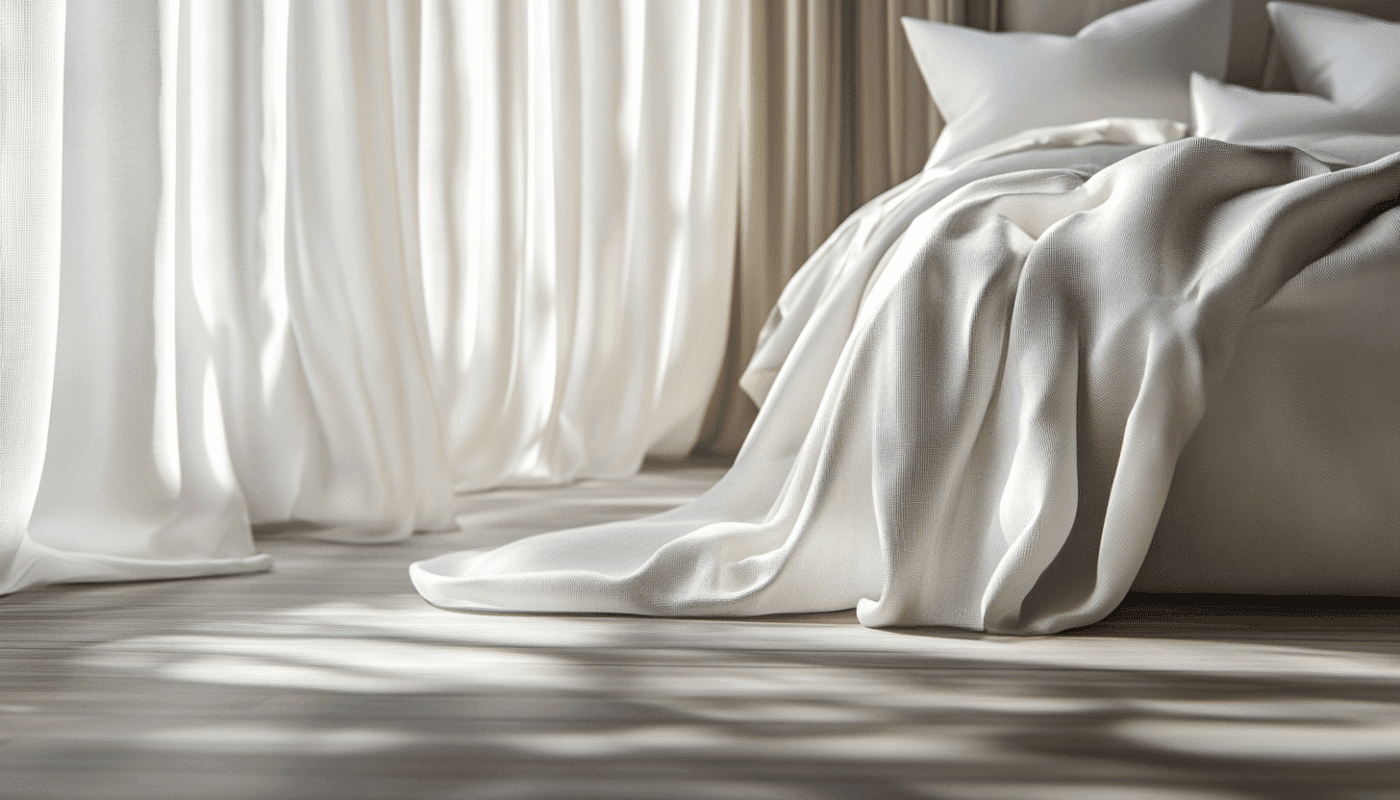
With a myriad of options out there ranging from classic to trendy, pure to mixed, navigating through them requires a trained eye – and hand. Each material offers a different visual and tactile experience, different functions and durability levels.
Let’s go through some of the most popularly sought drapery materials:
- Velvet – Plush, tactile and regal volumes of texture with high opacity. Recommended for spaces that require a dose of dramatic grandeur and good insulation. It’s highly durable and requires moderate maintenance levels.
- Silk – A smooth, supple material with unmatchable lumosity. The delicate fabric is moderate opacity and is used in spaces that require a touch of refined sophistication.
- Linen – Lightly textured, natural finish with moderate opacity. High durability with lower maintenance needs. Ideally used in contemporary settings for its relaxed appeal.
- Wool Blends – Heavier material with more structured drapes and high opacity. Great durability with low maintenance requirements. Excellent insulation and acoustic absorption.
- Premium Synthetics – Varying textures and opacities meant to capture the essence of natural fabrics. Highly durable and easy to maintain due to synthetic fibres.
Selecting the right fabric for your drapes is not merely about their appearance, but perhaps even more so in how they function and improve your daily lives with it. The fabric you choose needs to resonate with your unique lifestyle and specific space’s requirements.
Velvet: The Drama Queen of Drapes
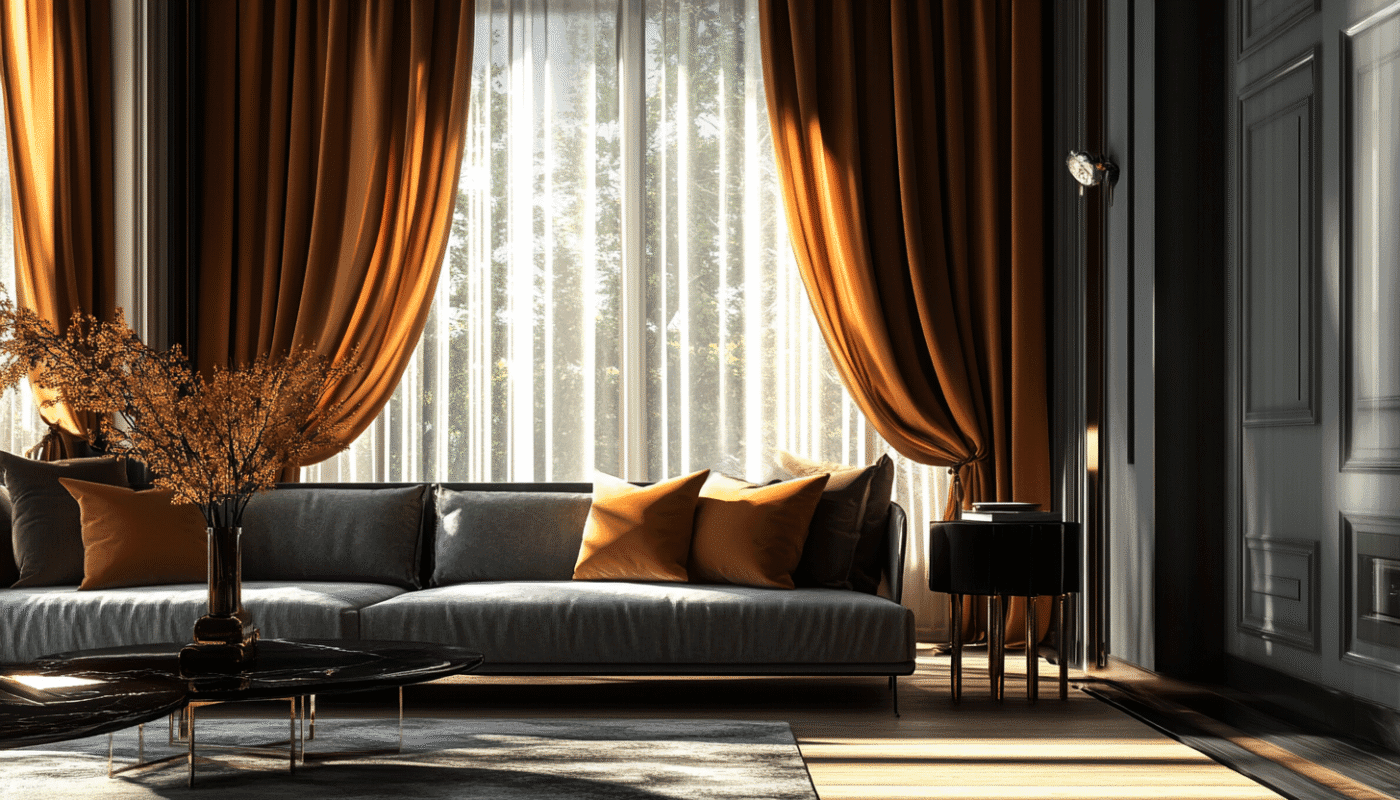
Velvet has long been associated with royalty, which comes as no surprise. Its short, silken piles create a stunning visual depth and richer colours. The silky fibres used for velvet manufacturing contribute to its soft, luscious feel and glamorous lumosity.
Luxury curtains in velvet offer a highly regal and lavish appeal to spaces without appearing gaudy or ostentatious. We recommend using velvet drapes for spaces where you require a touch of grandeur and privacy such as formal sitting areas, dining spaces and master bedrooms.
Velvet’s construction makes it a heavy fabric that requires the right quality of hardware and controlled dimensions to properly control and display it. The fabric’s striking nature means that it needs to be used in measured amounts so that it doesn’t overpower your space.
Designer Insight: Pair velvet drapes in striking emerald tone with sleek hardware in brushed brass or matte black to create a pleasing contrast for the fabric’s often visually heavy nature. This combination of traditional textiles with contemporary fixtures and fittings perfectly embodies the diverse design values in cities like Dubai.
Silk: The Timeless Elegance
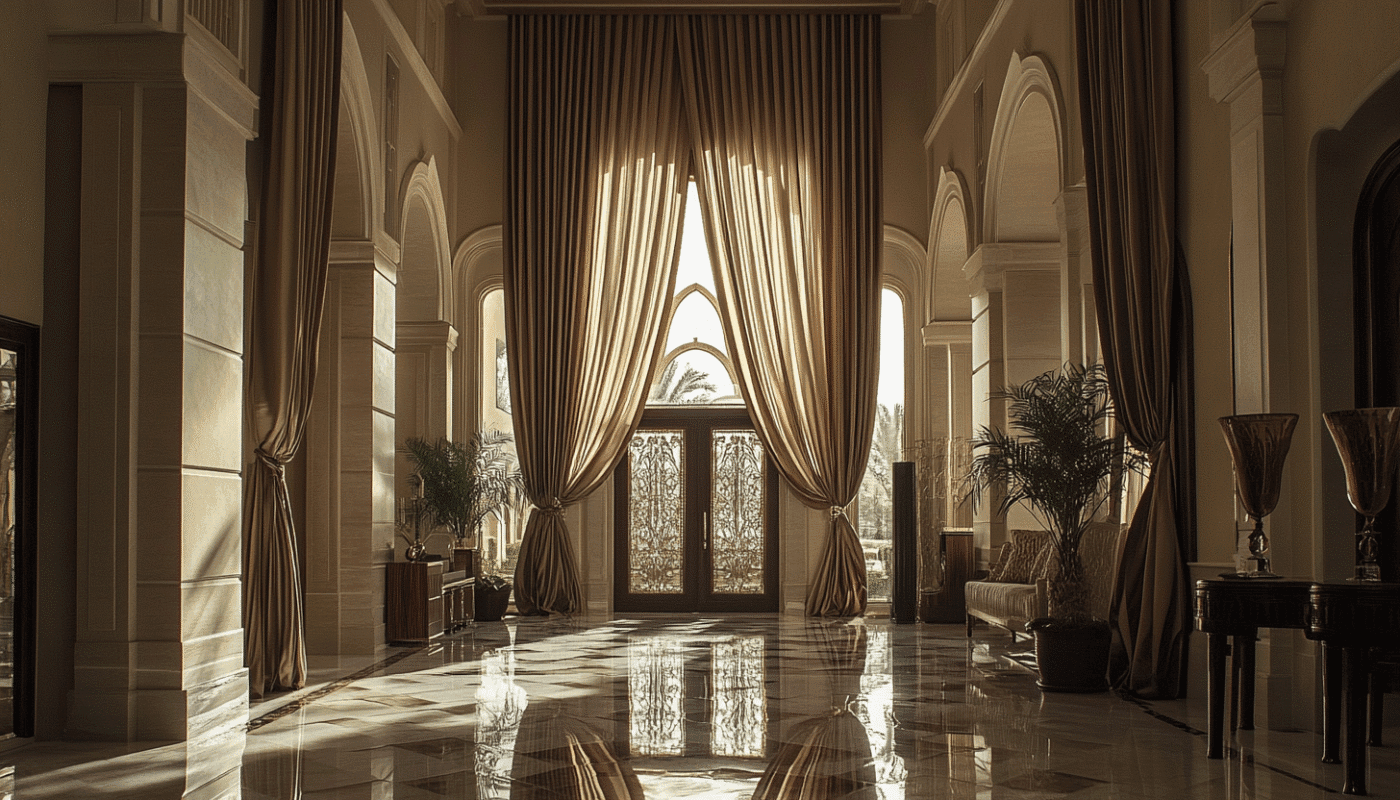
The light fabric is perfect for creating stunning folds that create a visual play between dark depths and glistening highlights. The delicate weave structure brings extraordinarily rich tones that can add life to the dullest spaces.
The fluid movement and luminous nature of silk makes it the perfect for draping windows in transitional areas, majestic entryways or master suites. Silk drapes have a low opacity which allows them to gently filter out the harsh sun outside into a warm, illuminating glow.
Silk drapes are delicate and more susceptible to damage if not used with proper protection. The UAE’s intense UV rays can cause deterioration across colour loss and structure. Even its maintenance needs to be done with the right precautions and care to ensure zero damage,
Designer Insight: When opting for silk drapes, always remember to line them with UV-reflective fabrics that will not only improve its longevity, but also help it offer better insulation.
Linen and Linen Blends: The Effortless Natural

The stunning irregularities and slubbed appearance of linen curtains contribute to echoing an effortlessly textured, relaxed appearance that serves particularly well in contemporary settings. Where linen’s low opacity helps diffuse UAE’s strong sunlight, its breathable nature enhances airflow making it highly appropriate for warmer climates.
We recommend linen drapes for rooms that could use a sense of relaxed sophistication, such as living rooms, day rooms and casual dining areas.
Linen drapes naturally tend to wrinkle up, but that’s exactly what contributes to its effortlessly dishevelled charm. It offers less insulation than the heavier counterparts, which may serve as a benefit in certain environments.
Designer Insight: Layer your linen curtains with a classic Roman blind in complementing tones for more textural interest. This practical solution offers better light control in spaces where you might require more or complete darkness at times, such as the bedroom.
Wool and Heavyweight Blends: Practical Luxury
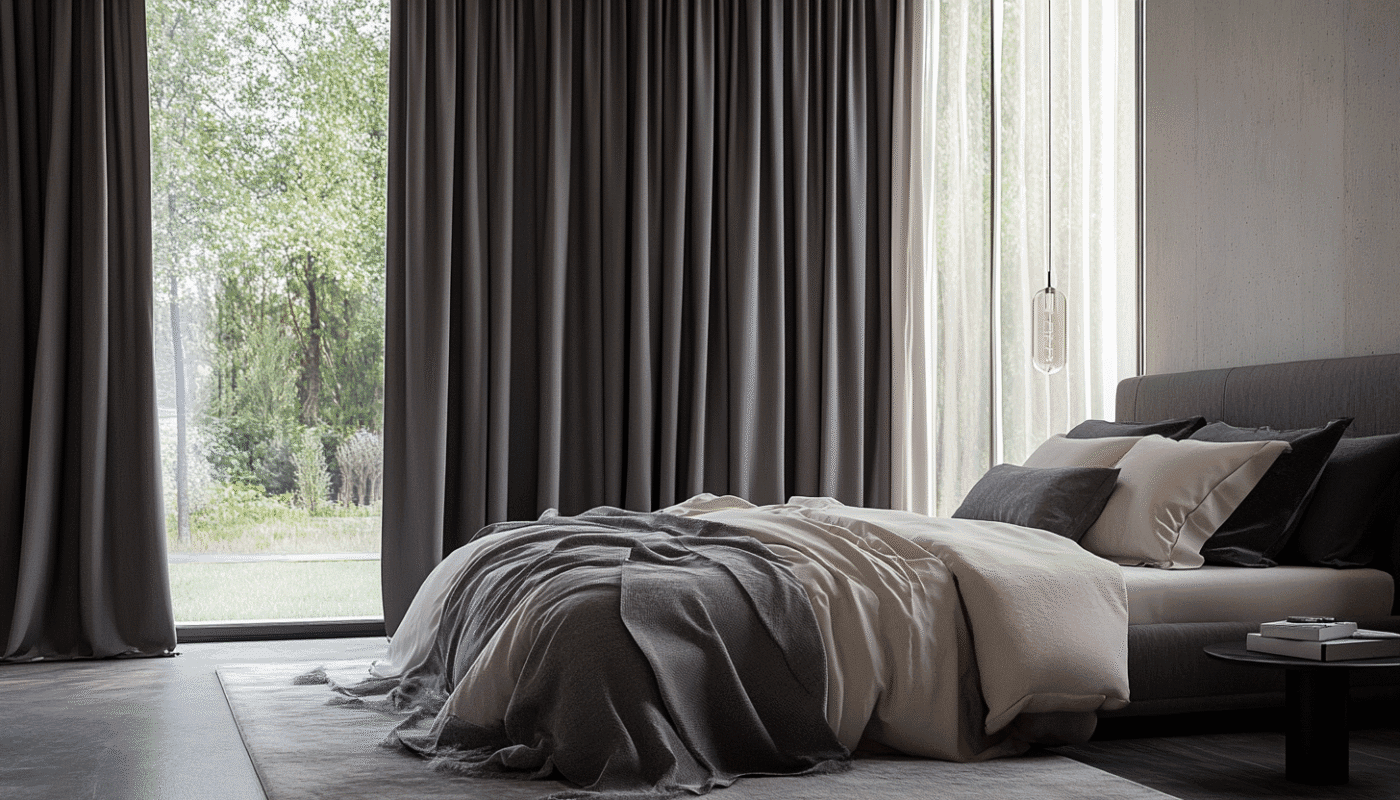
Wool and modern wool blends feature a heavy, substantial weight that reflects in their strong, structural drapes and exceptional insulating and sound absorbing qualities.
Wool drapes are preferred in spaces that require a higher control over light and sound, which is why we recommend it for rooms such as media rooms, studies, and bedrooms. They achieve all this while serving a wonderfully tailored, refined experience that more fluid and lighter fabrics can simply not match up to.
Untreated wool can present a somewhat heavy aesthetic and may feel coarse to the touch. Additionally, in very warm environments, wool may not be the first choice unless specific insulation from heat is required.
Designer Insight: Wool blends that have silk or cotton fibres incorporated offer a finer, more luxurious finish. They combine the functionality of wool with the supply grace of finer finishing. For homes in warm cities like Sharjah and Abu Dhabi, where the intense heat outside is starkly contrasted by the chilled air conditioning inside, wool blends can offer some much needed insulation.
Choosing Drapes Fabric: Questions to Guide Your Decision
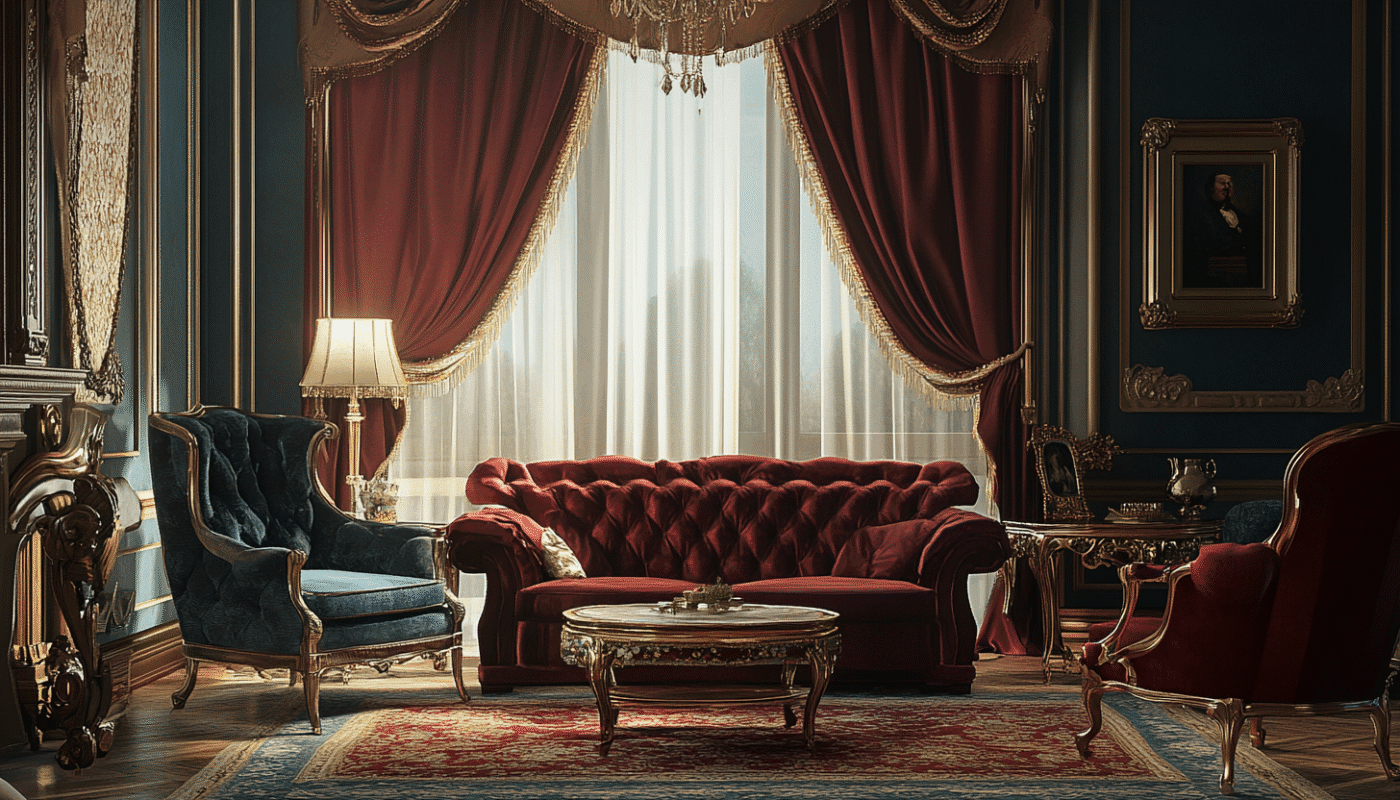
Selecting the right fabric for your luxury drapes can get confusing. To make things clear, ask yourself a few basic questions that will help guide you in the right direction:
- What is the primary function of these drapes?
Do you want to filter light or seek a total blackout effect, insulating skills or a simple decorative purpose? Each fabric serves these purposes in a different manner. - How does natural light interact with this space?
Under UAE’s bright sun, East and West facing rooms receive more direct sunlight at certain times of the day whereas South-facing rooms receive it throughout. Rooms with more exposure need better UV-protected fabrics. - What is the established aesthetic of the room?
Where contemporary settings are better complemented by cleaner, streamlined drapes, traditional spaces benefit from more luxurious and rich fabrics. - Does your lifestyle present specific practical considerations?
Homes that are known for frequently entertaining large parties, or families with younger ones and pets need to invest in washable, synthetic fabrics that are durable and easy to maintain.
Common Mistakes and How to Avoid Them
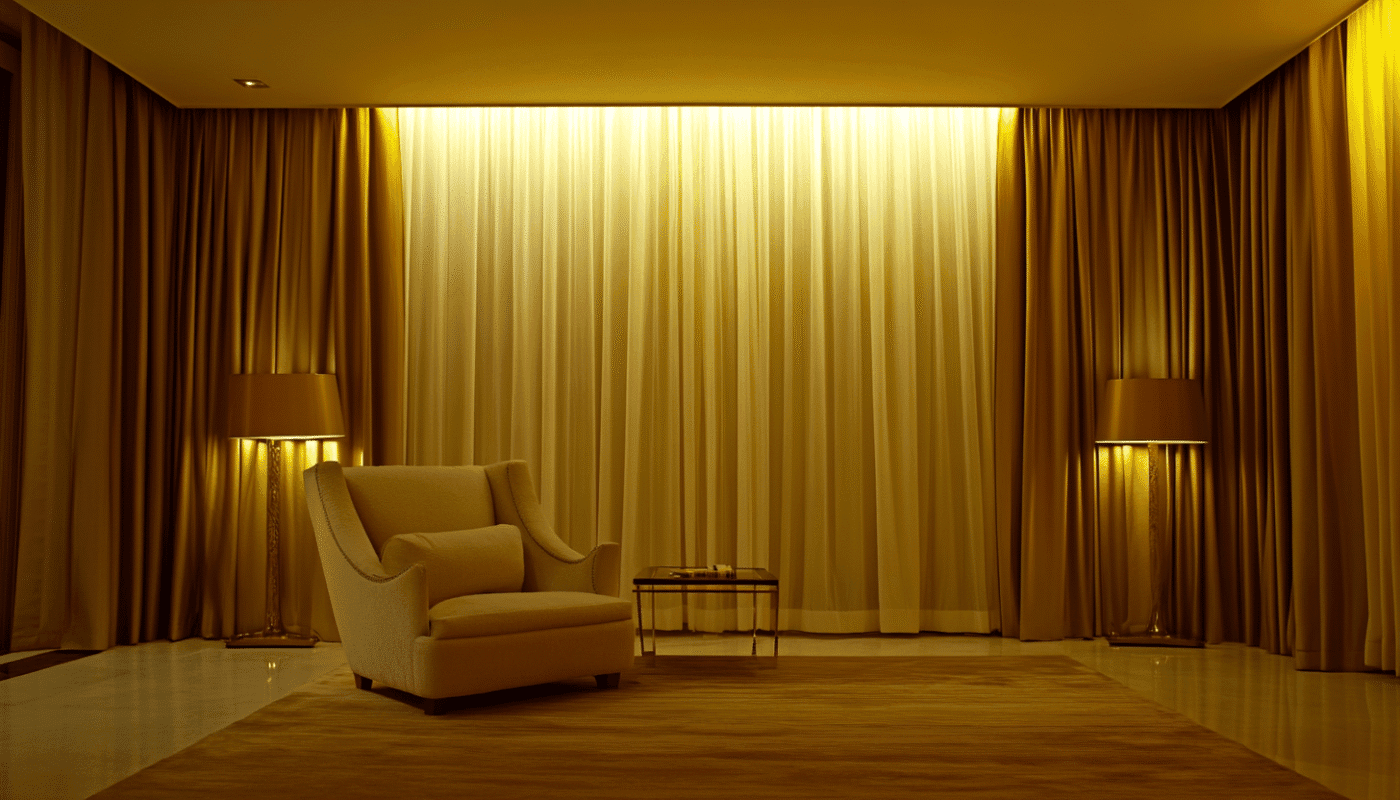
Even individuals with a highly trained eye and discerning tastes end up falling prey to some common errors when it comes to selecting the fabric for luxury drapes. Knowing these errors beforehand can help you easily avoid them:
Overlooking Lining Requirements
Lining is not just an optional, but often essential part of achieving quality drapes. They improve insulation, add more structure, and offer a layer of protection from damaging UV rays. They create a more polished, tailored finish that signifies luxury in a muted manner.
Prioritising Aesthetics Over Functionality
The visual allure of a luxury drape is undoubtedly one of its biggest appeals, but it offers so much more than meets the eye. Even the most luxurious silk drapes will fade away in rooms with strong sunlight exposure and offer bare privacy.
Miscalculating Fullness Requirements
Different fabrics require different widths to create a full, luxurious drape. Lighter silks should be around thrice the windows width whereas heavier wool and velvets will need much less to avoid a bulky look.
Attempting DIY Measurement and Installation
Bespoke drapes employ precise measurements and installations that are correct to the smallest millimeter. This level of accuracy can simply not be achieved without professional aid. In this case, saving uo may cost you heavily in terms of tacky aesthetics.
Final Thoughts: Making Drapes a Bespoke Design Statement
Selecting the right fabric for your drapes is vital to achieving a practical window treatment, yet it also serves as the perfect chance for you to create a tailored experience that will tie your space together. The impact of drapery over light, sound, temperature and space contributes to enhancing the kind of ambience you want your space to embody.
Visit our professional team of design consultants at FCI UAE, who not only have an exceptional knowledge on textiles and their varying qualities, but also a truly refined understanding of creating spaces that transcend the ordinary. We understand that when selecting a luxury drape for any space, there needs to be a perfect union between functionality and aesthetics.


